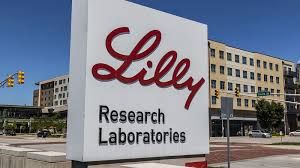
(UNDATED) – Eli Lilly and Company (NYSE: LLY) today announced patients have been dosed in the world’s first study of a potential antibody treatment designed to fight COVID-19.
This investigational medicine, referred to as LY-CoV555, is the first to emerge from the collaboration between Lilly and AbCellera to create antibody therapies for the prevention and treatment of COVID-19. Lilly scientists rapidly developed the antibody in just three months after AbCellera and the Vaccine Research Center at the National Institute of Allergy and Infectious Diseases (NIAID) identified it from a blood sample taken from one of the first U.S. patients who recovered from COVID-19.
LY-CoV555 is the first potential new medicine specifically designed to attack SARS-CoV-2, the virus that causes COVID-19.

“We are committed to working with our industry partners to generate scientific evidence to meet the urgent need for treatments that reduce the severity of COVID-19 disease,” said Mark J. Mulligan, MD, director of the Division of Infectious Diseases and Immunology and director of the Vaccine Center at NYU Langone Health. “Antibody treatments like the one being studied here hold promise to be effective medical countermeasures against this deadly infection.”
Lilly is researching multiple approaches to treating COVID-19. Existing Lilly medicines are now being studied to understand their potential in treating complications of COVID-19, and the company is collaborating with two biotech companies to discover novel antibody treatments for COVID-19.

“We are privileged to help usher in this new era of drug development with the first potential new medicine specifically designed to attack the virus. Antibody therapies such as LY-CoV555 may have potential for both prevention and treatment of COVID-19 and may be particularly important for groups hardest hit by the disease such as the elderly and those with compromised immune systems,” said Daniel Skovronsky, M.D., Ph.D., Lilly’s chief scientific officer and president of Lilly Research Laboratories.
Pending study results, the next step would be to test the treatment on people outside the hospitals. If the drug shows positive results, the goal would be to have several hundred thousand doses available by the end of the year.



